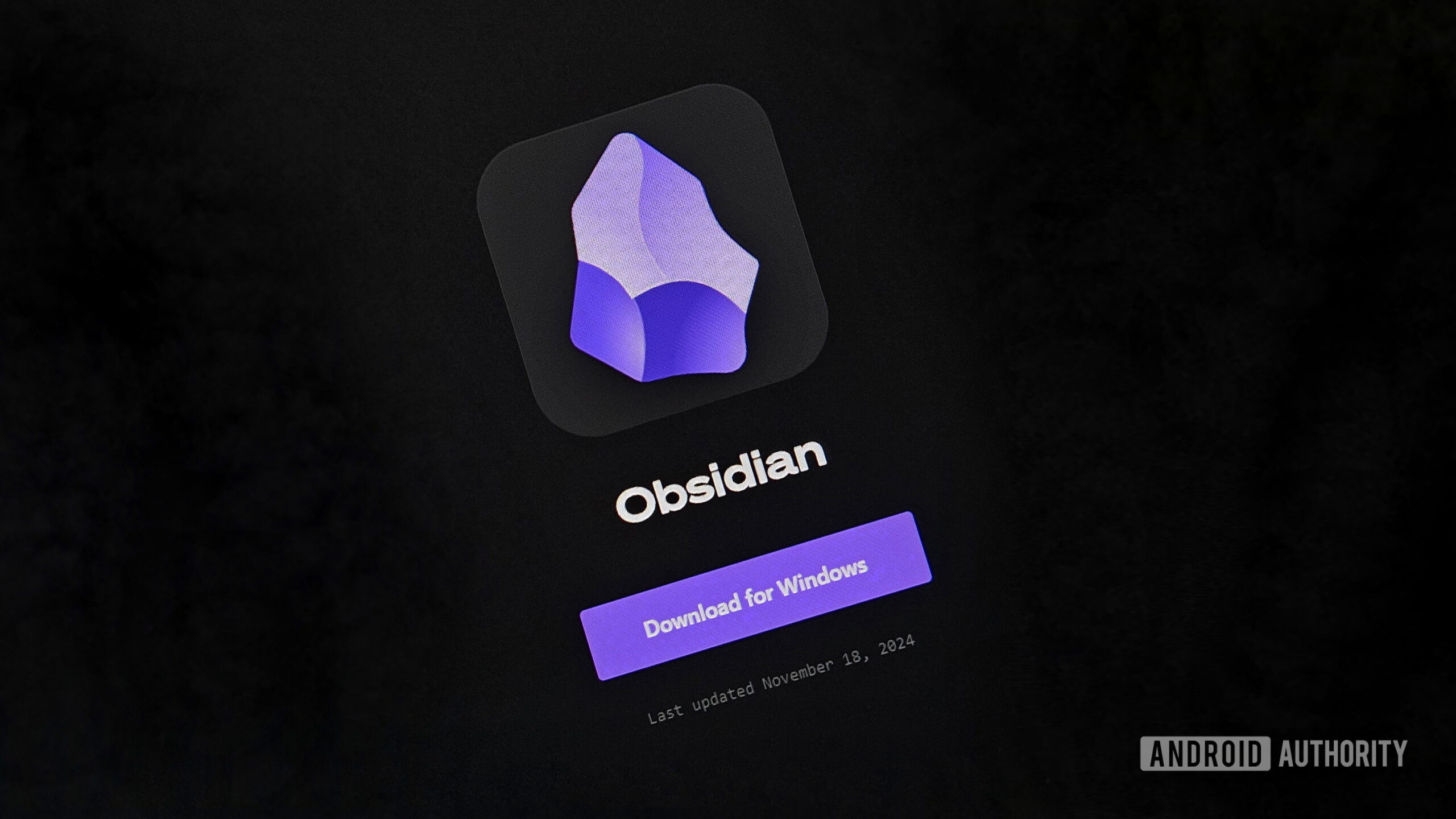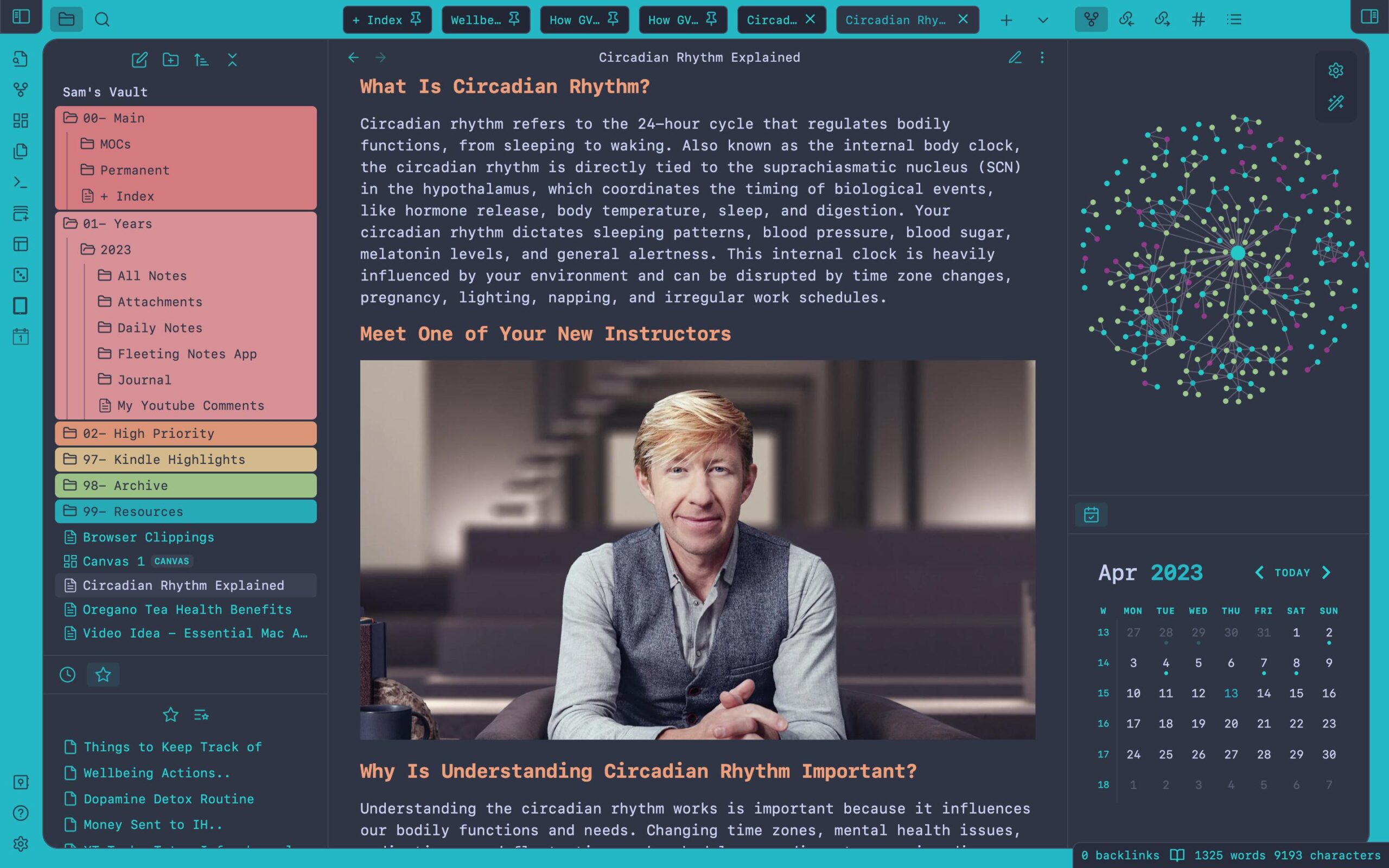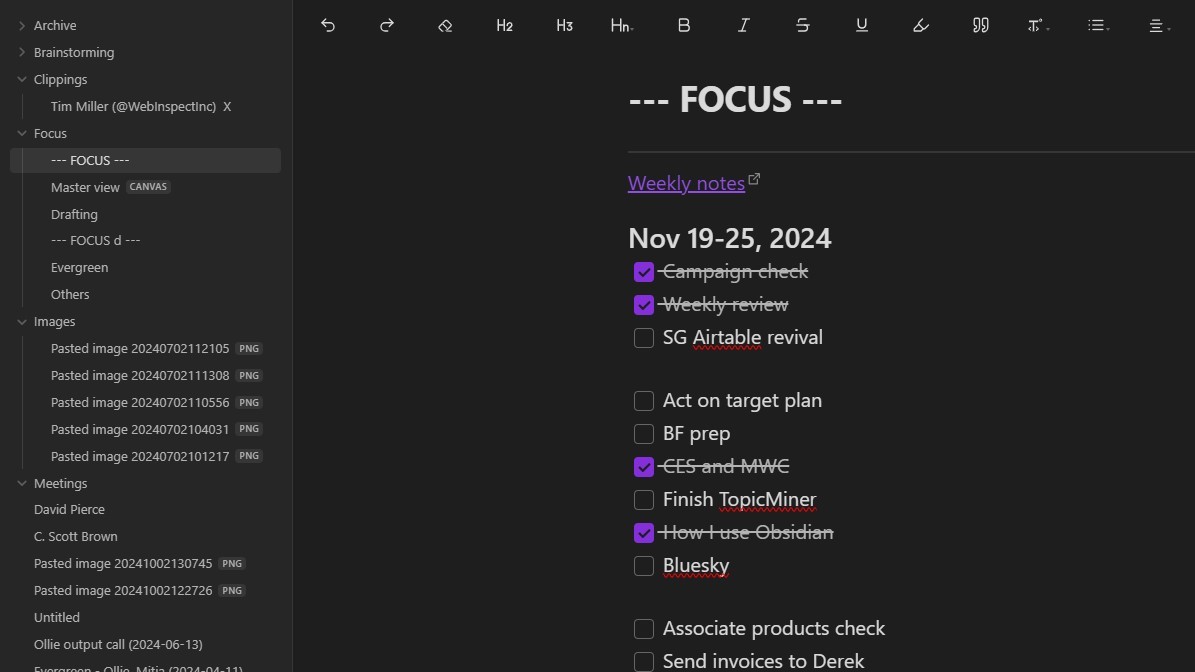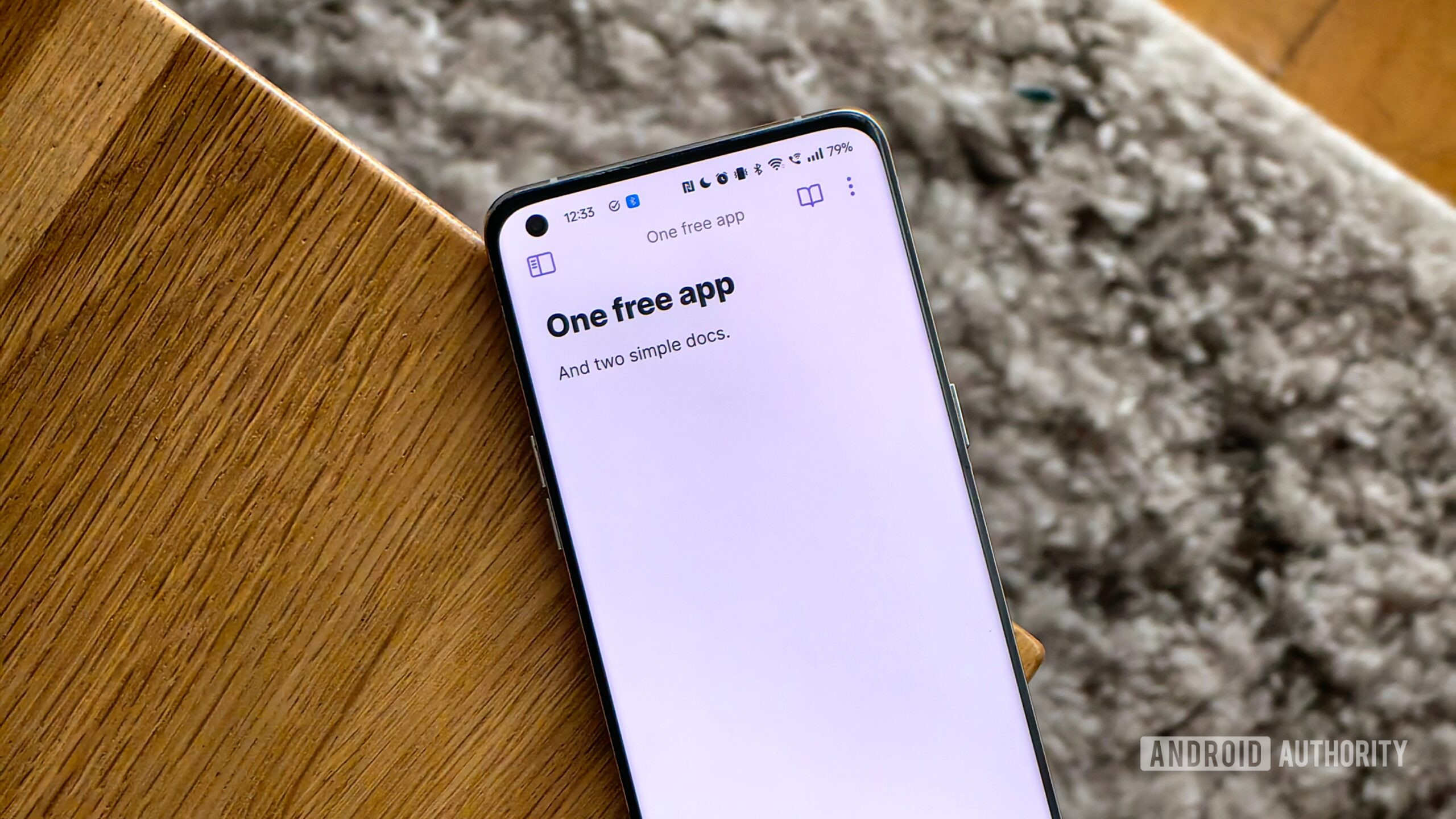
Bogdan Petrovan / Android Authority
Like everybody else, I’m always searching for methods to enhance my productiveness.
Through the years, I’ve run via my justifiable share of options: I attempted Google Hold for fast notes, Slack for real-time job reminders, Any.do for easy to-do lists, Pomodoro Chrome extensions to timebox my focus, Asana for project-level oversight, OKRs for aligning big-picture targets and aims, and over-engineered Airtables for larger tasks with many sub-tasks.
In the end (typically embarrassingly sooner), each system I attempted grew to become unmanageable, uncared for, and deserted. When all else failed, I’d return to pen and paper or just asking my spouse to remind me a few significantly vital factor.
Today, I’m preserving it easy — and it really works. When you’re desirous about a productiveness software that genuinely adapts to you, Obsidian may simply be the reply you’ve been trying to find.
A data employee drowning in data
First, a couple of particulars about myself. I’m your typical data employee, however with a twist — my (distant) job is all over. As a supervisor, I juggle all the things from main a group to dealing with organizational stuff. I want to change contexts always and hold monitor of approach an excessive amount of data. And sometimes, I even get to sit down down and really write stuff.
Whereas I’m grateful for a way attention-grabbing and difficult my job is, I’m typically struggling to remain afloat in an ocean of duties, reminders, messages, notes, and plans.
As a result of I’m desk-bound most days, I often work completely from my Home windows laptop computer. I’m not huge on cross-device sync and even cellular use, however I completely get why any trendy productiveness answer must nail these points, too.
Enter Obsidian
At its core, Obsidian is a note-taking app, but it surely’s far more than simply that. It might provide help to manage large chunks of your data and make it simply accessible, which is why numerous Obsidian loyalists name it a “digital mind.” I feel that’s an apt metaphor for what you are able to do with Obsidian, though I’m preserving my digital mind a lot less complicated.
Obsidian notes are constructed on Markdown, the favored markup language that makes use of easy syntax to format textual content. Typing **this** turns it into this — you won’t be acquainted with the title, however you’ve most likely used Markdown or Markdown-inspired syntax on Slack, Discord, or different widespread apps. As a result of I used to be already acquainted with the formatting conventions, creating notes in Obsidian got here straightforward to me.
The place brains have neural pathways, Obsidian has linking between notes. This deceptively fundamental characteristic helps you to outline and visualize relationships between concepts, ideas, or the rest you possibly can put in a word. By always constructing out this community, you make your digital mind extra complicated and highly effective every single day.
Obsidian will be as complicated or as fundamental as you want it to be.
With options like each day notes, templates, and a wealthy library of plug-ins, Obsidian can adapt to almost any workflow. That’s the fantastic thing about the app: it may be as complicated or as fundamental as you want it to be.
Whereas there’s potential to show it right into a extremely organized data administration system, I’ve discovered that preserving it easy has made it a lot simpler to stay with.

A customized Obsidian configuration by u/SamBorgman
The docs that really work (for me)
Once I began utilizing Obsidian, I went all in, constructing out a library of notes. I arrange separate folders for assembly minutes, targets, and brainstorming classes. I dutifully recorded each day notes. I experimented with linking notes and even created a “Grasp view” visible canvas that was presupposed to be my vaunted hub of all the things.
In idea, it was the proper setup for managing my data. However in follow, it was full overkill. All that construction simply sat there, gathering mud.
Finally, I discovered myself coming again to only two foremost paperwork: a weekly to-do record referred to as “Focus” and a giant, messy catch-all doc I labeled “Drafting.” These two paperwork do the heavy lifting for me day in and time out, with out the necessity for intricate folders or hyper-organized word techniques.
These two paperwork do the heavy lifting for me day in and time out.
The Focus doc is my weekly to-do record. I jot down all the things I have to deal with within the fast future. It may be as small as replying to a message or making ready for a gathering , or as vital as developing with a complete new technique for our web site. Even this text began as a to-do merchandise in Focus.

Bogdan Petrovan / Android Authority
My Focus word is the operating record of issues I have to do
Firstly of each week, I copy final week’s job record to the highest of the web page, alter it for the present week, and begin over. Nothing slips via the cracks except I select to delete it. As a result of I always see duties from earlier weeks, I’ve a possibility to catch points that should be reopened or ongoing duties that should be carried over into the brand new week.
Tip: whereas Obsidian doesn’t make it apparent, it helps inserting checkboxes in your notes (the shortcut is Ctrl/Cmd-L). Checking them off feels extraordinarily satisfying.
The Drafting doc, alternatively, is my unstructured, everything-goes-here house. Must ship out an vital electronic mail? It goes in Drafting. Must troubleshoot an Airtable method or jot down concepts for an article? Identical. It’s the place I dump analysis notes, hyperlinks, photographs, and random mini-to-do lists — all with out worrying about format or order.
Right here’s the half which may appear weird to you: I hardly ever delete something from Drafting. I simply hold including extra to the underside. As a result of it’s so quick to scroll via, it’s straightforward to search out one thing from weeks again if I want it. This “brute drive” strategy won’t be essentially the most polished, but it surely saves me from shedding notes or concepts scattered throughout Google Docs, Slack, emails, to-do apps, or worse, my very fallible reminiscence.
Between Focus and Drafting, I’ve discovered a option to monitor about 90% of what I want with out paying the “productiveness tax” of regularly sustaining and organizing notes. There’s no each day repairs, no elaborate folder buildings — simply two easy docs that match naturally into my workflow.
It’s not a sophisticated, all-encompassing system, but it surely works for me, and actually, I feel it might work for lots of people. Nevertheless, if and after I determine my system must be extra complicated, I’ll simply ramp it up due to Obsidian’s flexibility.
Wait, can’t you do that with different apps?
Sure, you completely can use Google Docs or every other textual content editor to maintain a weekly to-do record and a operating word dump. I advised you it’s two easy docs, in any case.
However Obsidian presents one thing these different instruments don’t. It’s each quick and lean after I need it to be unobtrusive (more often than not) and immensely highly effective after I have to innovate with how I do my work.
That’s one of many largest attracts of Obsidian — the power to increase and customise it endlessly. I’ve already added themes to make it look the best way I need, discovered a number of plugins that make my day-to-day simpler, and tweaked the UI to suit my work type. It feels private, like a workspace I’ve constructed for myself.

Bogdan Petrovan / Android Authority
And right here’s the kicker: I’ve barely scratched the floor. There’s nonetheless a lot to discover — plugins that would fully change how I take advantage of it, CSS tweaks for styling, and sync choices for after I wish to work throughout units. It’s uncommon for me to discover a software that’s this customizable and has a lot untapped potential, and I’m genuinely excited to dive deeper into what Obsidian can do. And whereas my setup is fundamental in the present day, I do know I’ll proceed to depend on Obsidian if I ever have to make it complicated once more.
It’s uncommon for me to discover a software that’s this customizable and has a lot untapped potential.
Whereas I agree Obsidian has a steeper studying curve than many client apps, you shouldn’t really feel discouraged from making an attempt it out. It’s undoubtedly not the sort of note-taking app you possibly can fireplace as much as shortly jot down a procuring record — however for every other use case, the training curve is certainly value tackling.
Whereas it’s not an enormous issue for me, Obsidian additionally does one thing that’s fairly uncommon as of late — it really works absolutely offline and your knowledge is saved in your machine, not within the cloud. There’s a $4/month service referred to as Obsidian Sync that can sync your notes throughout units, but it surely’s fully elective. Oh, and the app doesn’t drive any AI options on you (however you possibly can simply combine ChatGPT by way of a plug-in must you need it). Talking of AI, Google’s AI-first NotebookLM is certainly value testing.
Some assets to get you began with Obsidian
Obsidian could be a little intimidating, so listed here are some assets I like to recommend to Obsidian newbies.
And with that, I’ll return to chipping away at my Focus record.

